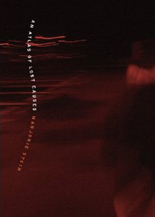Jai Arun Ravine
Review of Marjorie Stein's An Atlas of Lost Causes
( Kelsey Street Press , 2011)

Dear sister, I've moved into your room. Held hands up to the light. At this angle, secretly outlining the shape of a gangster's heart, any shadow can thrill the mind. Vowing to capture the rapid eye movements of my crimes--your crimes. Someone will take a bullet. (How should the skin tear when cut?) You'd be surprised, but it takes a long time to break something properly (3).
Marjorie Stein's An Atlas of Lost Causes constructs an anatomical theater around the death of the narrator's twin sister. The scene(s) of the crime(s) are transformed into an intricate diorama and the text "focuses with parallax lenses," investigating from a multitude of perspectives to determine distance. Stein echoes Rosemarie Waldrop when she writes, "Language can be said to kill the body. An interview seen as pinning a body down" (61)--as she attempts to identify and label each dissected part.
Like a book of maps, each page of this text holds up a segment of a larger picture, fraught with "the grammar of disintegration" (65) and the inquisitive dreaming of a sleuth's grief. The narrator "gravitate[s] to these broken centers" (92) in order to sense her twin's body and, through that missing body, detect things hidden.
Drawing from early processes of photography and film, Stein develops scenes and allows them to set. Elements and actions are fixed yet unstable, in the process of becoming images. The twin's abandoned room is a giant pinhole camera, a black box. Inside, all points of view are flipped, reflecting new significations. Potential causes are rehearsed and answers, lost.
The intersections between film, death and dream resonate with Satoshi Kon's animated film Paprika, [http://www.sonyclassics.com/paprika/] in which a homicide case haunts a cop's dreams. A series of succeeding images shift slightly with each dreaming. Sometimes he is the one who takes the bullet; sometimes he is the one who fires the gun.
"She speaks without punctuation where one open-ended fiction follows another, changing the scenery" (88). Stein references Muybridge's horses [http://en.wikipedia.org/wiki/File:Muybridge_race_horse_animated.gif] and offers a series of objects in stillness, which in rapid succession animate. The exact details of the crime--the act, the loss, the lost cause--change depending upon their proximity and arrangement. "Shot-by-shot motion was stolen then stitched into a ribbon. [...] Any scene can come apart in our hands" (25).
Lines and images lean against lines and images until they become "latticed," and Stein circles around them 360 in 3D, creating a circumferential meridian. These serial images become the serial kill; the inert becomes inertia. The point dissolves into its vantage, becomes a stain, a body of water, a body of evidence.
I feel sentimental about wanting to retain my inner geography of her space. The exact distance between the armchair and the bookcase triangulated by the coordinates of her eyes. She has been removed from the immediate scene. The sides of the isosceles triangle blown out of proportion (26).
Like scissors slicing through filmstrip, Stein's writing is of glittering, broken assemblage. "A stranger realizes it's a perfect day and leaps to cover each lumen with her own body, while an entire galaxy of broken glass moves through her nerves" (4). The narrator's twin's body is "assembled from the leftovers" (95) but cannot be argued as proof. Because of this, Stein stages exhibits in a theater of memory. Through-lines and channels are graphed: hand to bone, bone to room, room to skin, skin to cell, room to cell, cell to water, water to photograph.
This book examines not the effects, but the causes of ending a life. In her autopsy of grieving, Stein illustrates how loss disintegrates the body. "Ritualizing human remains has put sorrow into our mouths and we learn that bodies, broken down, and bones hollowed out by grief, have invented a music to fill the wreck" (41). Library to inventory, inventory to gravity, gravity to folds, folds to falling, falling to dissolution, dissolution to horizon.
The text is accompanied by a series of contour line drawings of figures that imply three-dimensional texture and motion. "The only way to convict the criminal is through sublimation--the way ice can move into the atmosphere as vapor without first becoming water. Just so, I will enter her mind. All matter must eventually undergo a phase change" (11). These phase changes and transfers are the slippage through which the narrator intercepts the "moving target" (5) of her twin's memory, tracing the outlines of her absence. "We love for the bones to go on without us" (41).
Stein travels backward, through death's erasure, to the source of starlight. The narrator's twin is an outline she can't quite follow; she under- and over-exposes into shadow and light. There are no witnesses to report the nature of the plane, or the number of clouds and birds obscuring the face of the sun. The twin's journal fails to be exact, and the flight and/or fall of the murder and/or suicide is hoarded as a stolen item, a recovered piece of the wreckage--is set on fire. Stein's text ascends to the stars, crosses borders and dead lines. The pilot and the plot imprint and scatter, switch and exchange. Stein's acts of trespass "...attempt a sentence in this dissolving language" (34), finding reasons to continue interrogating what is and is not evident.
Am I my body? What happens when I cut my hair or trim a fingernail--have I discarded my self? What if I lose a finger, my eyesight, my hearing? Exactly where is the "I" located? Did the crime involve a body? (33)